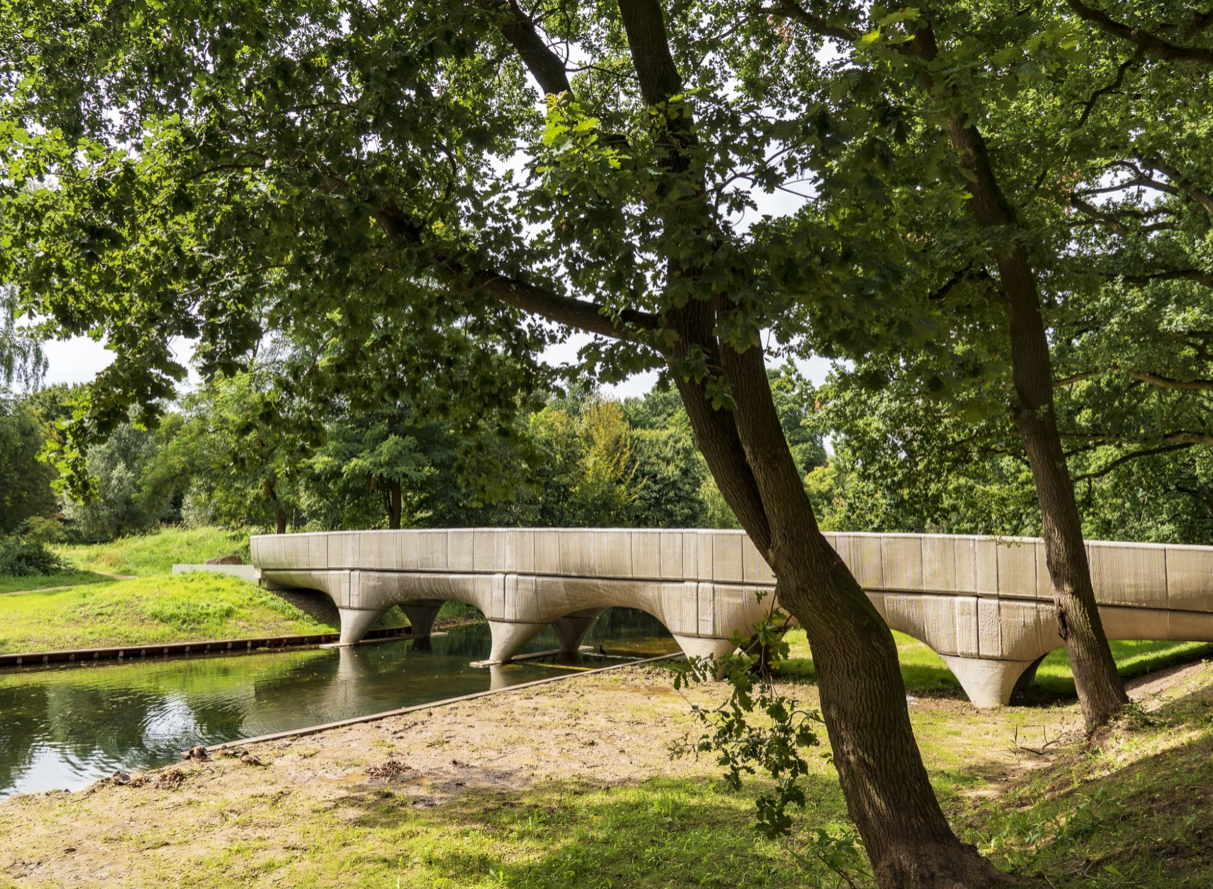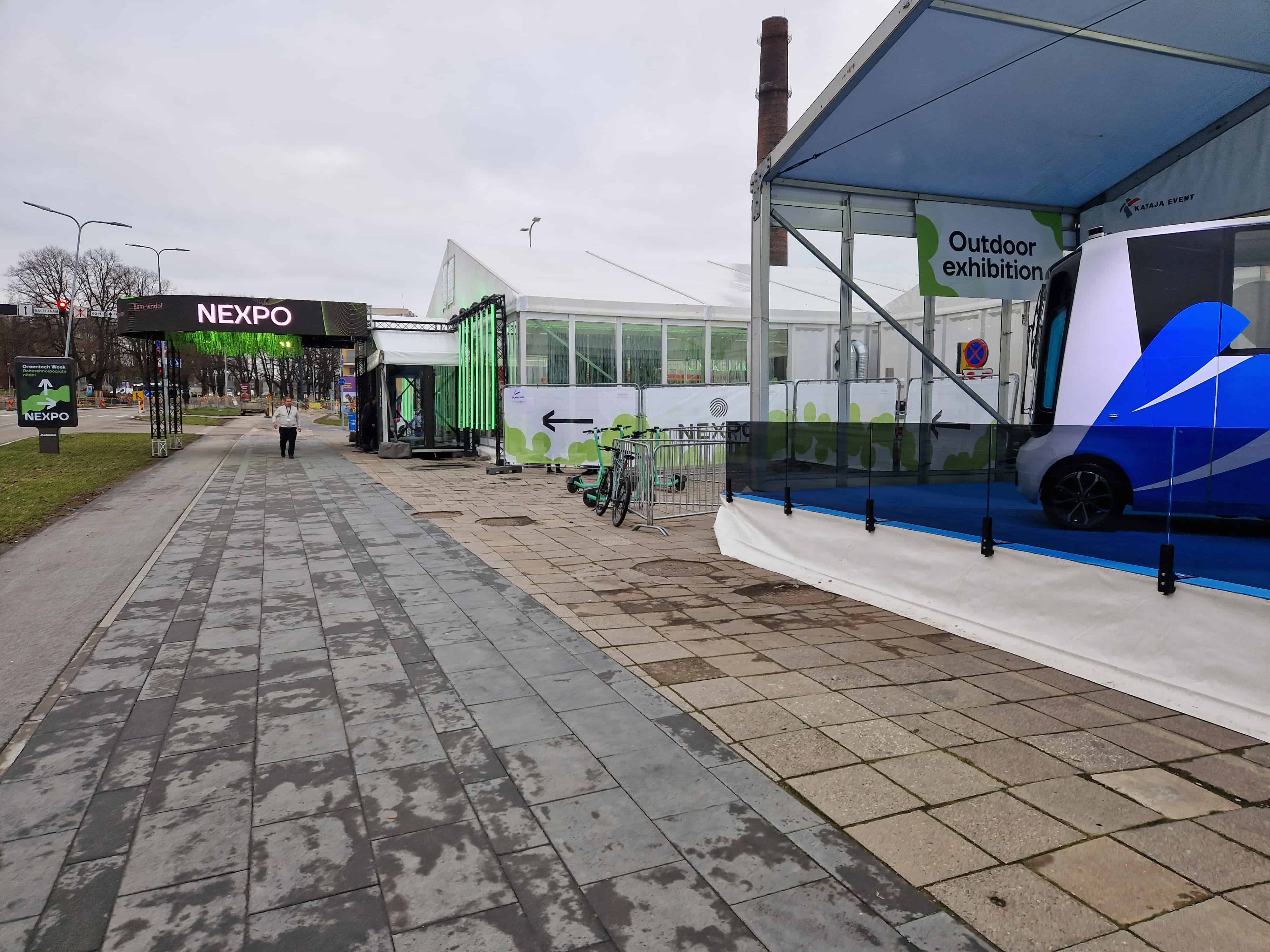
With a length of 29 meters, the Dutch city of Nijmegen is now the site of the world’s longest 3D-printed concrete bicycle bridge. The project is unique in that the bridge was designed with complete freedom of form, thanks to research at Eindhoven University of Technology and the further development of 3D concrete printing technology (see also Innovation Origins’ earlier post on this). Characteristic of the new appearance in the Dukenburg park De Geologenstrook are the round and sloping shapes, said the Technical University Eindhoven (TU/e) in a press release.
The new bridge will be officially inaugurated today, September 8. The event can be followed live beginning at 16:00 via this link.
The bridge was printed layer by layer in the concrete printing factory of Saint Gobain Weber Beamix and built by the BAM construction company. It is not only the longest but also the largest concrete bridge in the world for which the architect had complete freedom. Michiel van der Kley was able to work freely on the design and was not hindered by the material or traditional processes such as concrete formwork.
The span is not uniform throughout, so the changing weight of the structure had to be taken into account. So it was decided during the printing process to divide the bridge into printable parts. The final design was then generated using a parametric model, i.e., based on data.
Faster and more flexible
In principle, printed bridges can be built a lot faster than conventional ones, with more flexibility and more room for customized designs. In addition, they are more sustainable, as less concrete is needed. The ambition of the partners in this innovative project is for 3D concrete printing to ultimately lead to a sustainable construction method for the production of bridges, houses, and other things.
That is also why Rijkswaterstaat, together with designer Van der Kley, took the initiative for this project. They donated this special bridge to the municipality of Nijmegen in commemoration of its election as European Green Capital 2018.
For the right knowledge and expertise, the help of the Eindhoven University of Technology and Theo Salet, an expert in the field of 3D printed buildings, were enlisted. Consultancy and engineering firm Witteveen+Bos translated the design of the bridge into printable structural components. The parametric model of the bridge was engineered by Summum Engineering.

Theo Salet, a professor of Concrete Structures at Eindhoven University of Technology, comments: “The printing of concrete has enormous growth potential. We use less raw materials and can drastically increase the construction speed. In the future, we want to make concrete more sustainable and also reuse it. There is much more to be gained in the supply chain. I am also proud that the expertise we have developed has found its way to the industry so quickly.”
Also interesting: Will the 3D printer shake up the construction industry?
Selected for you!
Innovation Origins is the European platform for innovation news. In addition to the many reports from our own editors in 15 European countries, we select the most important press releases from reliable sources. This way you can stay up to date on what is happening in the world of innovation. Are you or do you know an organization that should not be missing from our list of selected sources? Then report to our editorial team.







